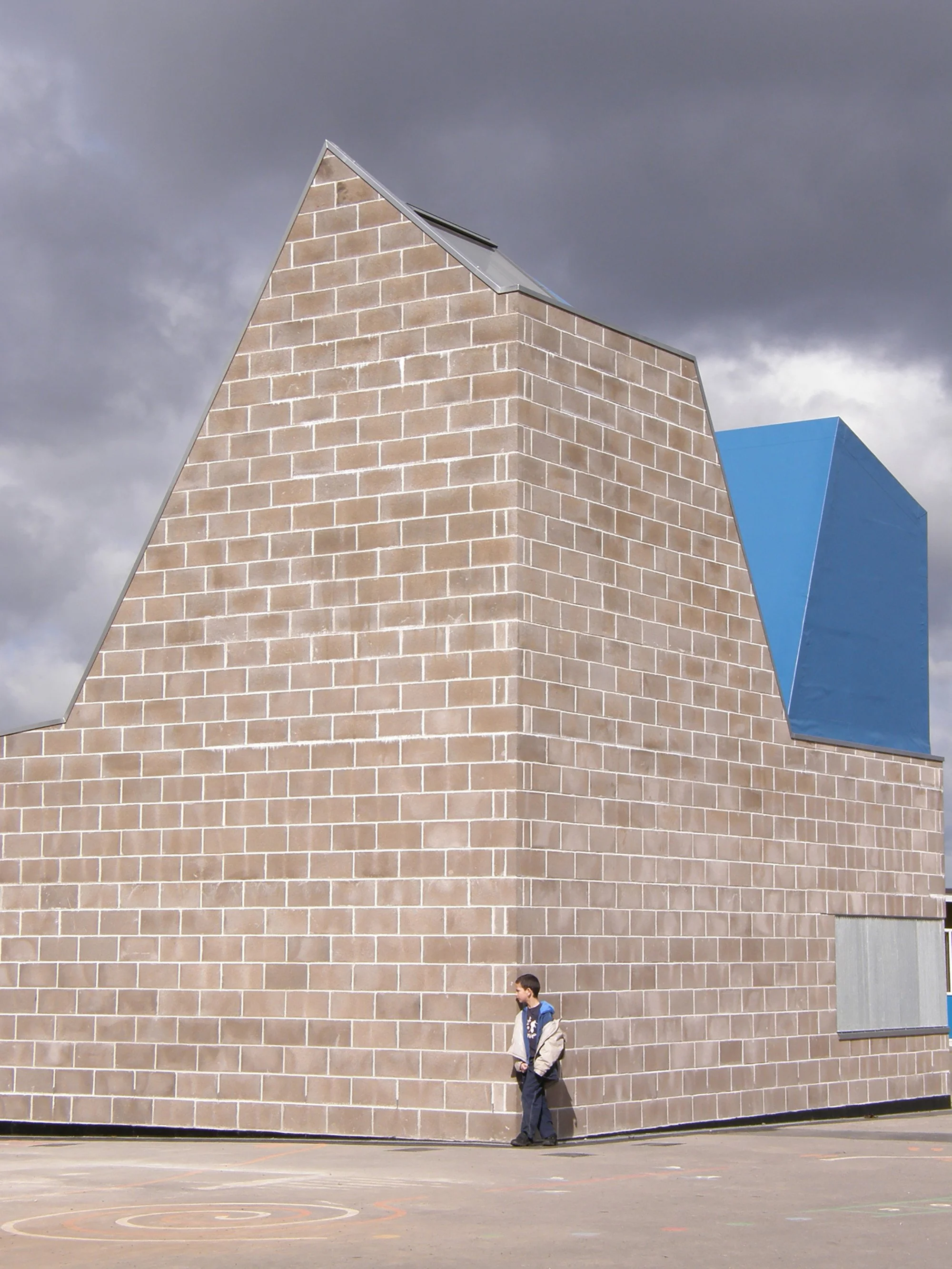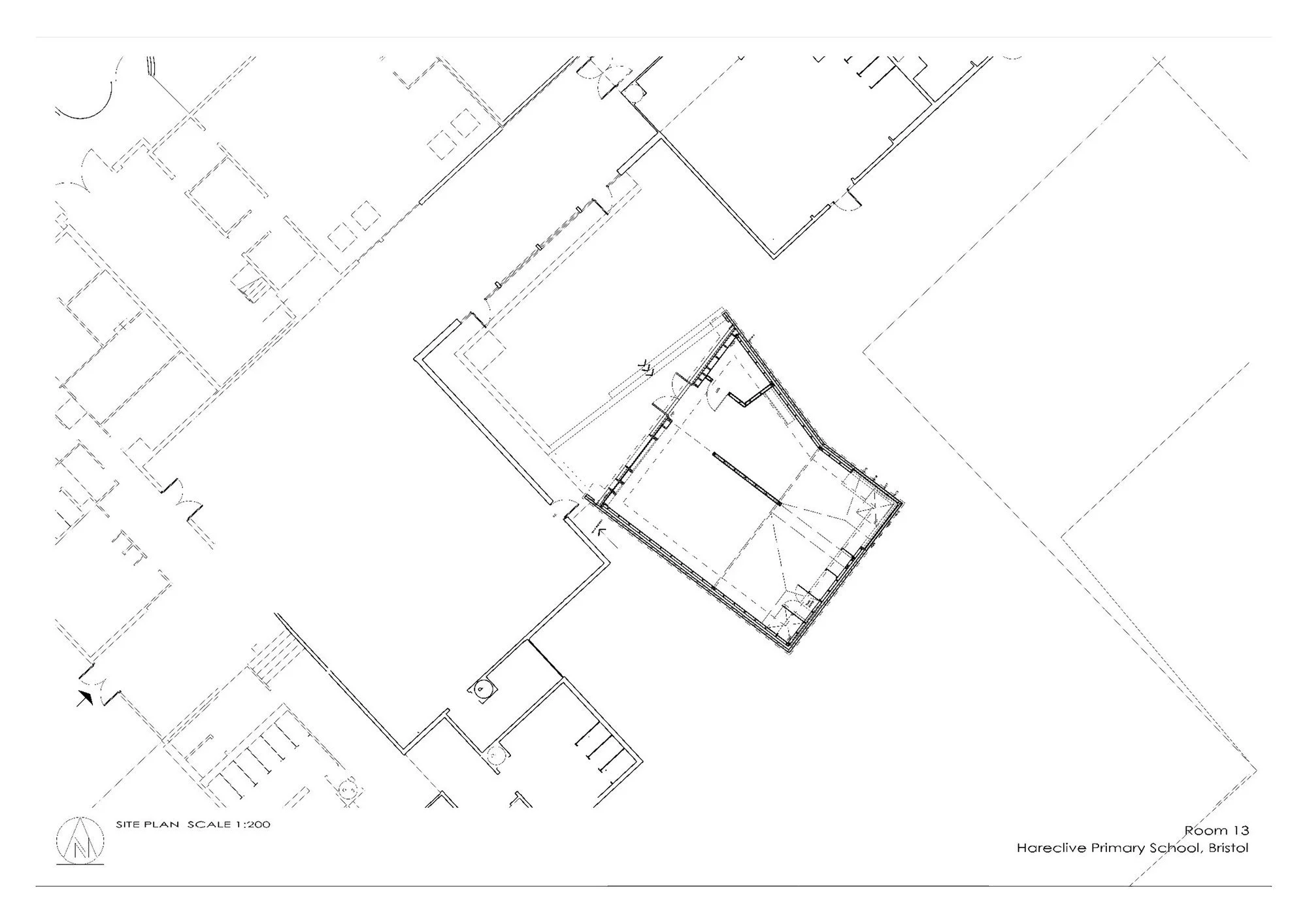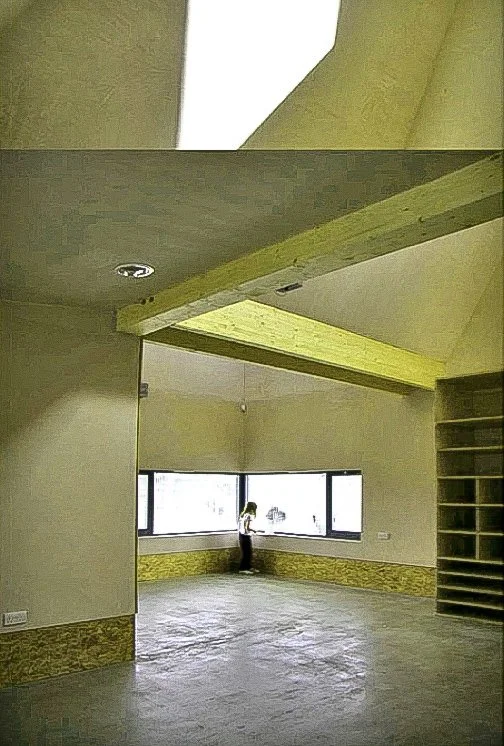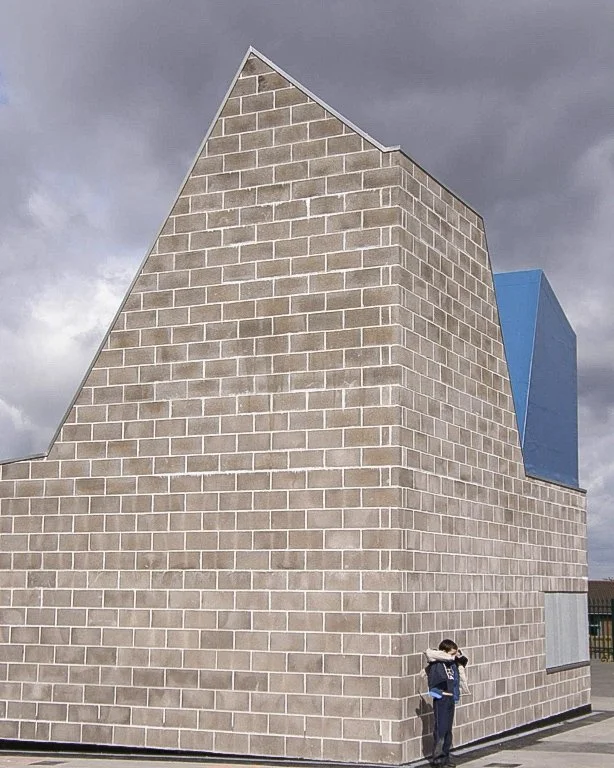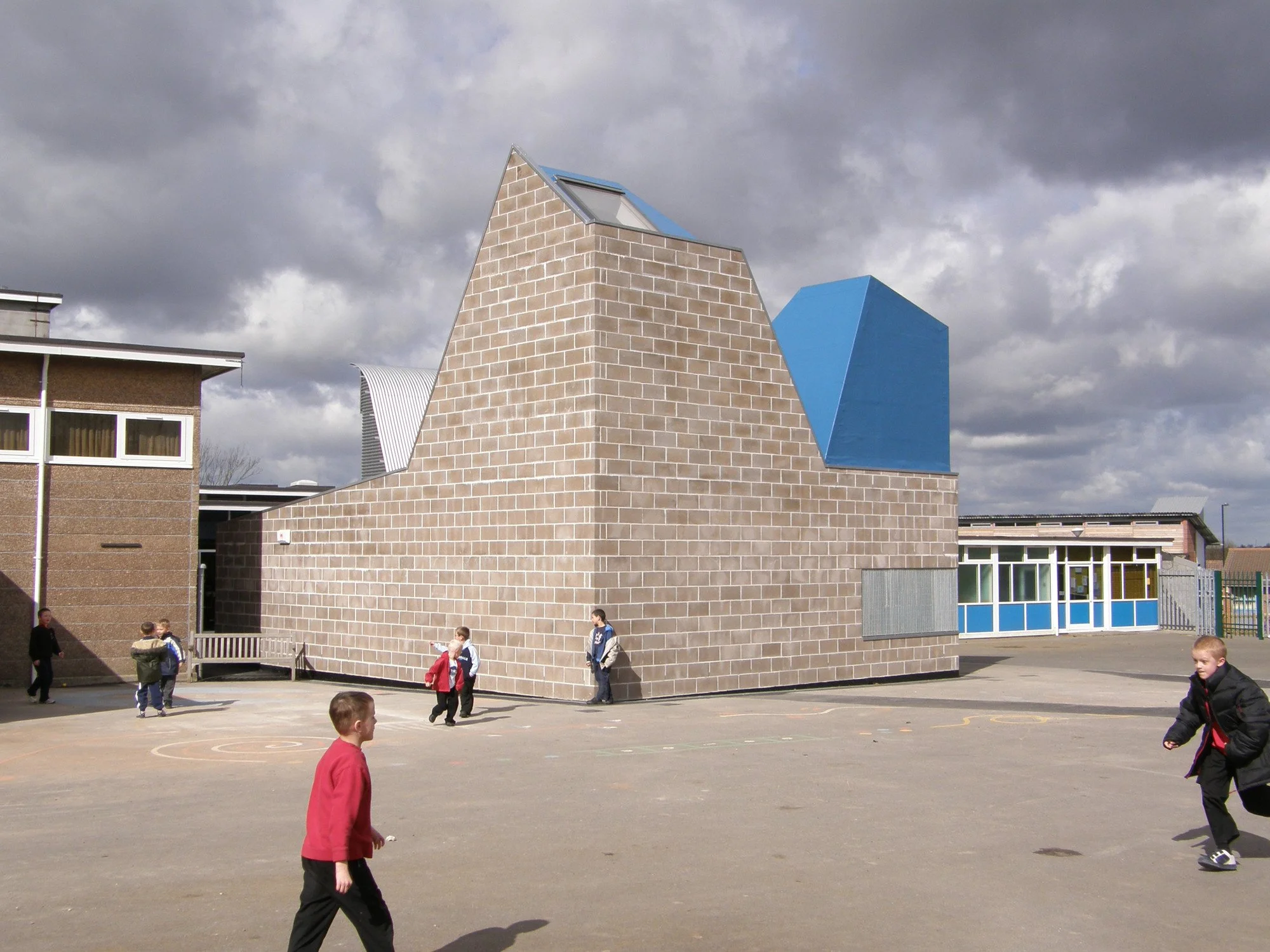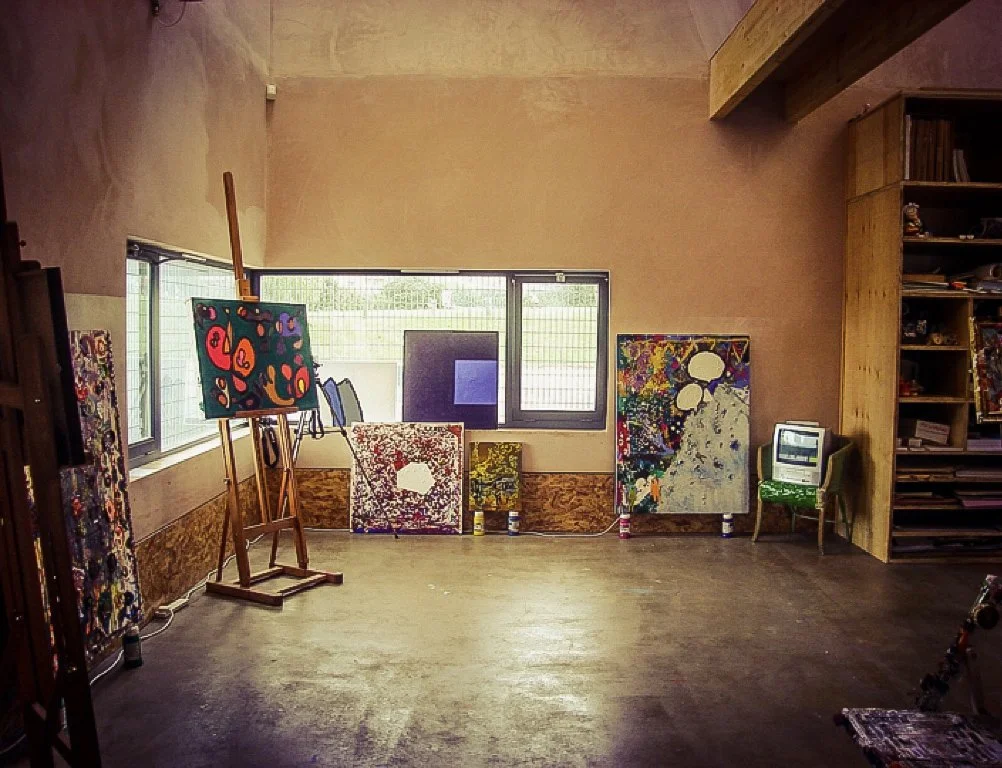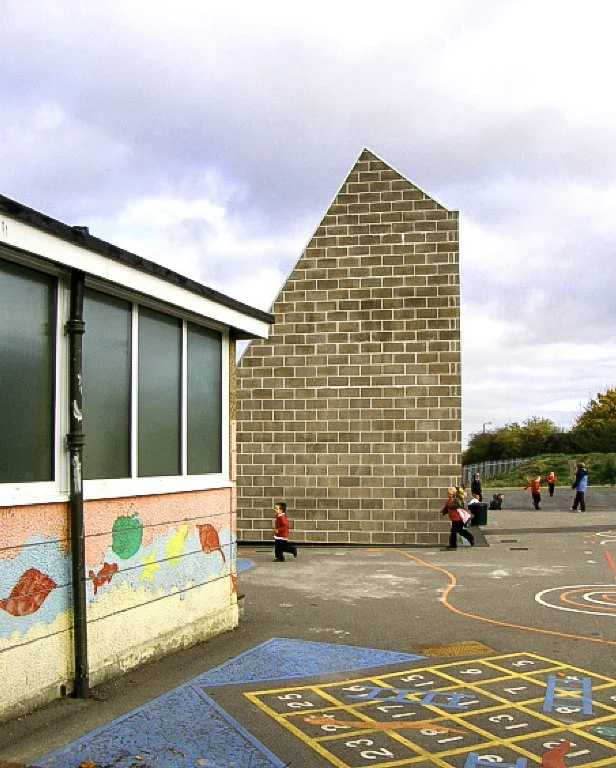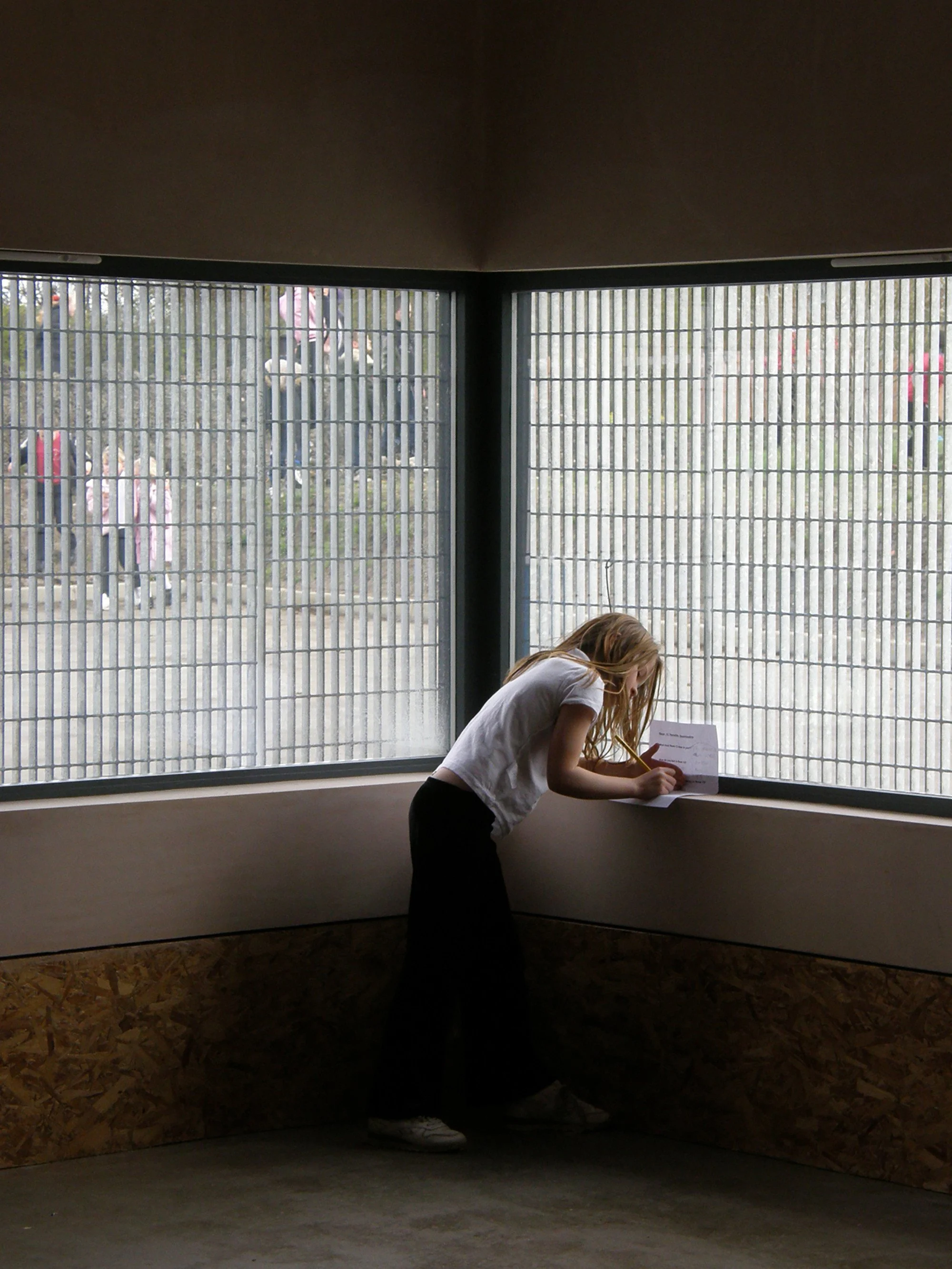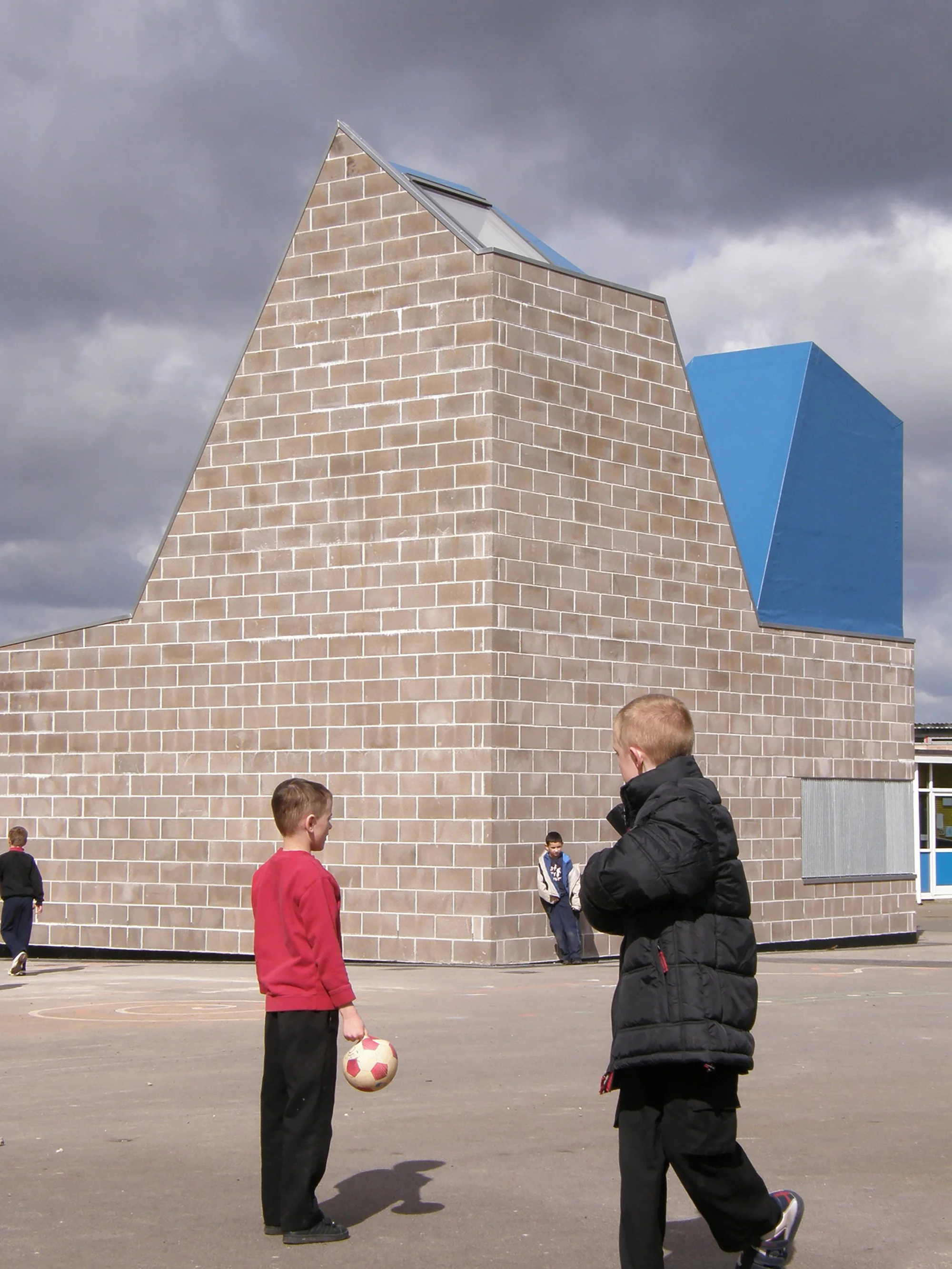room 13
Room 13, a purpose-built art studio, was designed as a direct response to its gritty urban context and the social program it houses—a charity where resident artists work alongside excluded children, providing them with a sanctuary for creative expression. Nicholas Serota called this ‘the most important model for art education we have today’.
This unique and experimental building challenges conventional notions of architecture by embracing low-grade, everyday materials, demonstrating that beauty and functionality can emerge from humble, unrefined sources.
Informed by the ethos of Room 13, the building’s design intentionally rejects the polished, “neo-craftist” trends often associated with high-end architecture. Instead, it uses raw concrete blocks for its external walls, with the interior finished with bare plaster, shuttering plywood, OSB (oriented strand board), and a varnished concrete screed—materials that are ubiquitous, inexpensive, and widely available. The materials themselves become part of the building’s identity, with the patina that emerges over time reflecting the lived experiences of those who use the space.
Room 13 was created not just as a physical structure, but as a dynamic environment for social interaction and creative collaboration. The architecture of the building is as much about the process of ‘making’ as it is about the space itself. The use of everyday materials challenges the idea that architecture must always be highbrow or polished, showing that even the simplest materials can be elevated into something beautiful through their creative application and the life that plays out within them.
Functionally, the studio is designed to be sustainable and energy-efficient, incorporating a ground-source heat pump to heat and cool the space. The building features “snouts” that serve both as ventilation shafts and light wells, providing natural light while promoting airflow. These design elements reinforce the building’s commitment to sustainability, while also contributing to its distinctive, utilitarian aesthetic.
Room 13 was awarded a National RIBA Award in 2007, as well as a regional sustainability award, in recognition of its innovative use of materials and its social impact. The head of the RIBA Jury Panel remarked that the project was a clear demonstration that “more than anything, architecture is about people.” The studio’s success lies not in the polish of its materials or the grandeur of its form, but in its ability to serve as a space that enables social change, fosters creativity, and challenges traditional architectural conventions.
Ultimately, Room 13 stands as a powerful example of how architecture can be a tool for empowerment, breaking free from the constraints of traditional design in favor of something that is both anarchic and profoundly human.

